An electric dipole (AB) consisting of two particles of equal and opposite charge and same mass is released in an electric field. In the figure field lines are without considering effect of field of dipole.
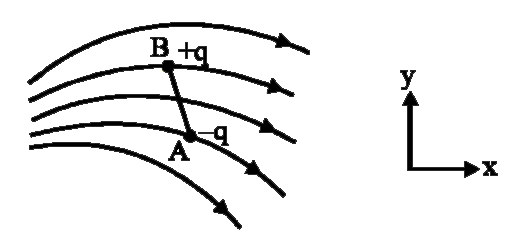
The centre of mass of the dipole
Has no acceleration
Has acceleration with positive x and y components
Has acceleration with positive x component and negative y component
Has acceleration with negative x component and positive y component
Step by step video & image solution for An electric dipole (AB) consisting of two particles of equal and opposite charge and same mass is released in an electric field. In the figure field lines are without considering effect of field of dipole. The centre of mass of the dipole by Physics experts to help you in doubts & scoring excellent marks in Class 12 exams.
Updated on:21/07/2023Topper's Solved these Questions
Similar Questions
An electric dipole (AB) consisting of two particles of equal and opposite charge and same mass is released in an electric field. In the figure field lines are without considering effect of field of dipole.
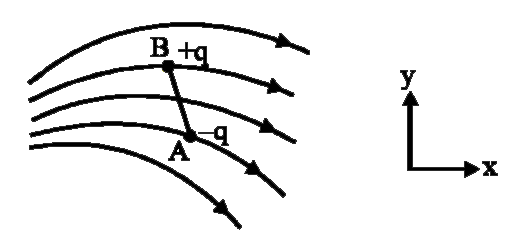
Angular acceleration of the dipole, immediately after it is released
View SolutionAn electric dipole is placed in an electric field generated by a point charge then
View Solution
Knowledge Check
An electric dipole is placed in an electric field generated by a point charge
AThe net electric force on the dipole must be zeroBThe net electric force on the dipole may be zeroCThe torque on the dipole due to the field must be zeroDThe torque on the dipole due to the field may be zeroAn electric dipole is the combination of two equal and opposite charges q and -q, respectively, separated by distance 2a. There are different points where we can find electric field due to the electric dipole. In the given table, column 1 shows different positions of point where we have to find electric field due to dipole, column 2 shows the figure of dipole with different positions of point where we have to find the electric field and column 3 shows the value or final formula of the electric field of different positions of the point.
When point P lies on the equatorial plan of the electric dipole, electric field due to -q is ?
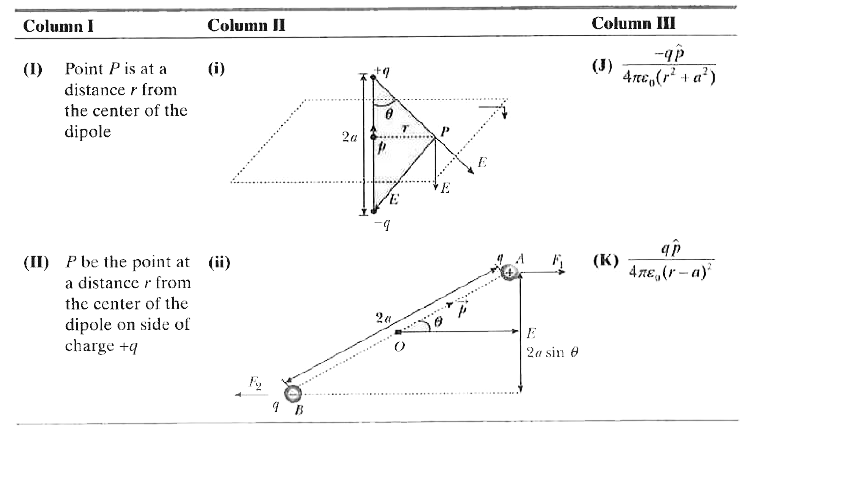
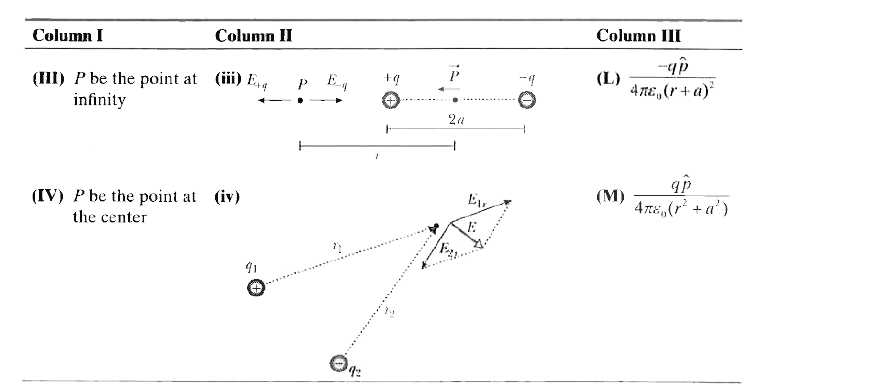 A(I) (i) (J)B(I) (i) (M)C(III)(iii) (J)D(I) (i) (K)
A(I) (i) (J)B(I) (i) (M)C(III)(iii) (J)D(I) (i) (K)An electric dipole is the combination of two equal and opposite charges q and -q, respectively, separated by distance 2a. There are different points where we can find electric field due to the electric dipole. In the given table, column 1 shows different positions of point where we have to find electric field due to dipole, column 2 shows the figure of dipole with different positions of point where we have to find the electric field and column 3 shows the value or final formula of the electric field of different positions of the point.
when point P lies on the equatorial plane of the electric dipole, electric field due to +q is ?
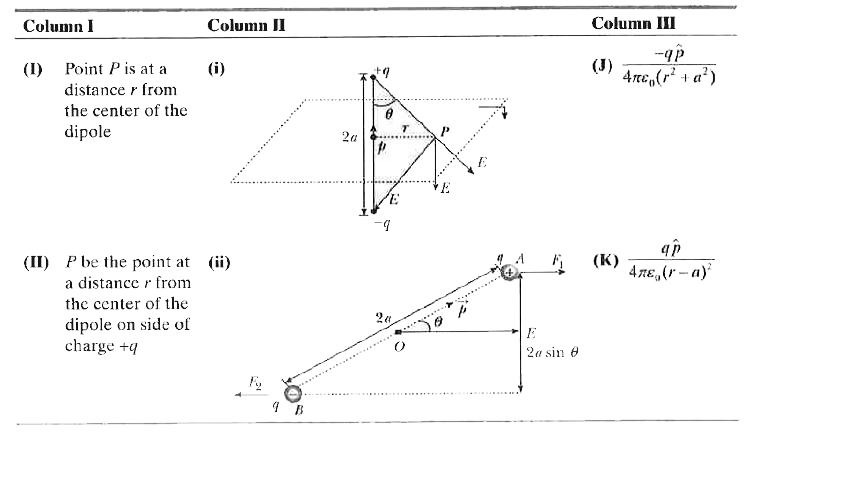
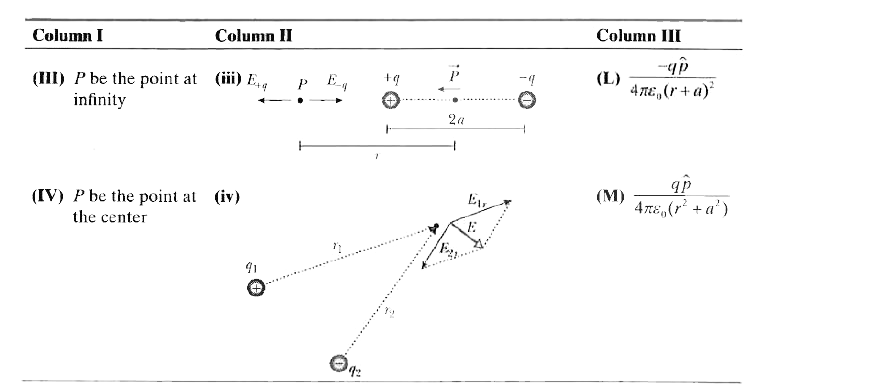 A(III) (ii) (L)B(IV) (i) (M)C(III) (iii) (J)D(I) (i) (M)
A(III) (ii) (L)B(IV) (i) (M)C(III) (iii) (J)D(I) (i) (M)
An electric dipole is placed in an electric field generated by a point charge then
View SolutionAn electric dipole is placed in a uniform electric field. The dipole will experience
View SolutionDipole in Non Uniform Electric Field
View SolutionElectric Field due to Dipole
View SolutionAn electric dipole is the combination of two equal and opposite charges q and -q, respectively, separated by distance 2a. There are different points where we can find electric field due to the electric dipole. In the given table, column 1 shows different positions of point where we have to find electric field due to dipole, column 2 shows the figure of dipole with different positions of point where we have to find the electric field and column 3 shows the value or final formula of the electric field of different positions of the point.
When point P lies on the axis of the electric dipole, electric field due to -q is ?
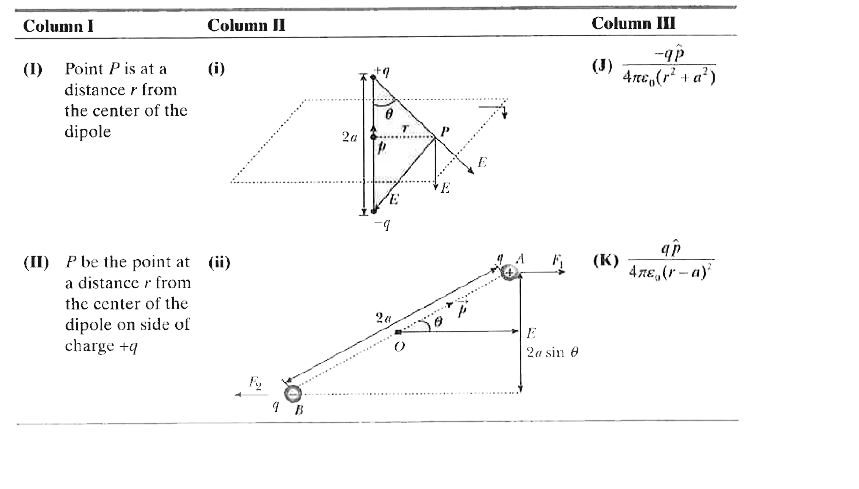

View Solution

